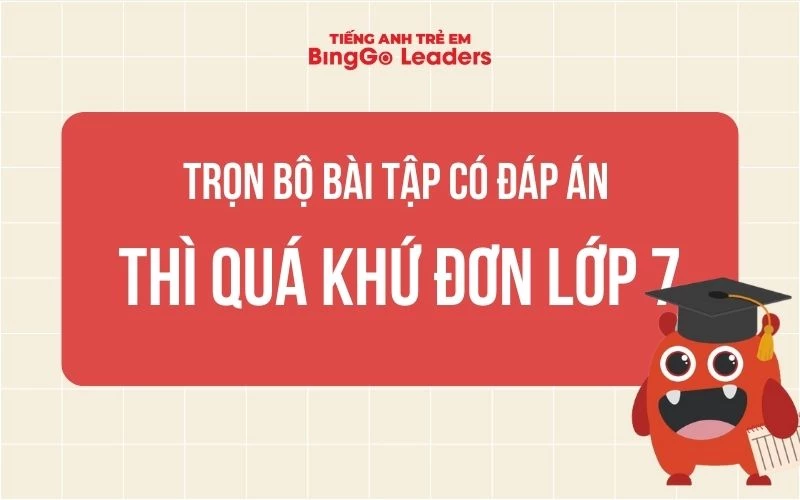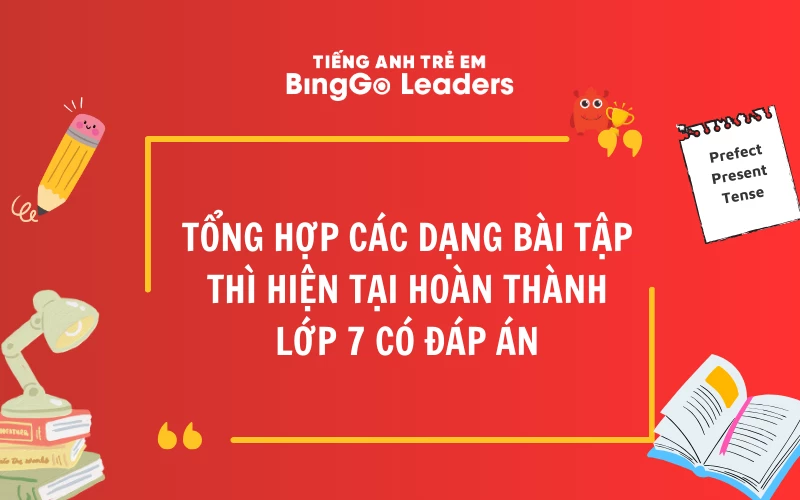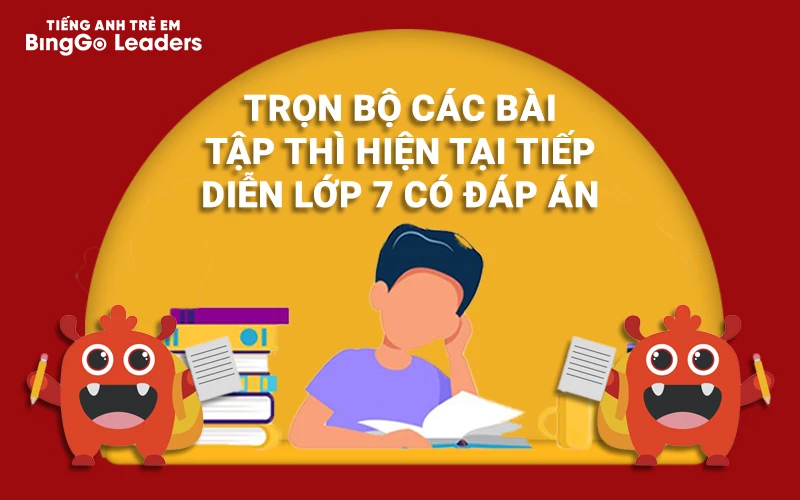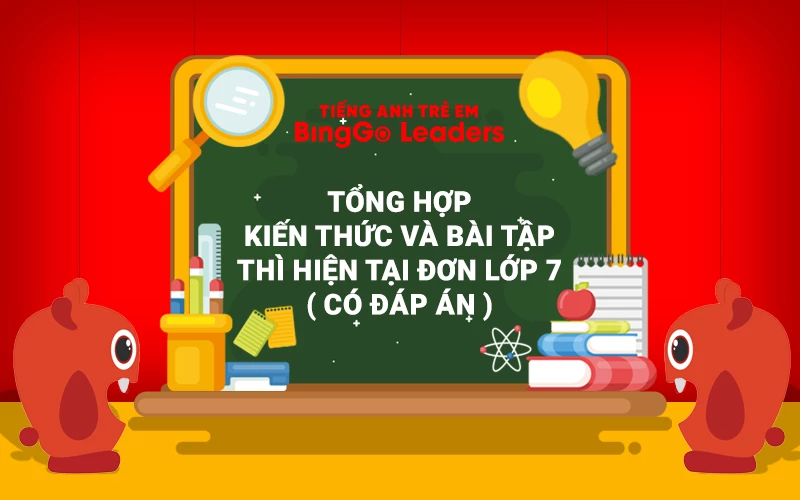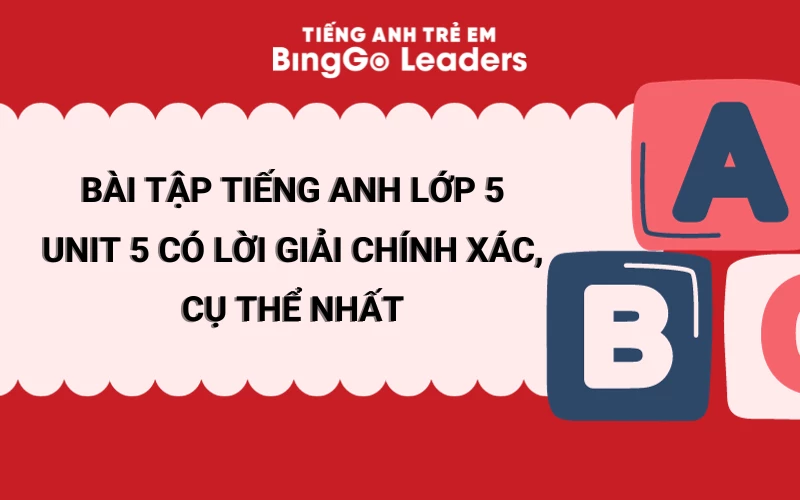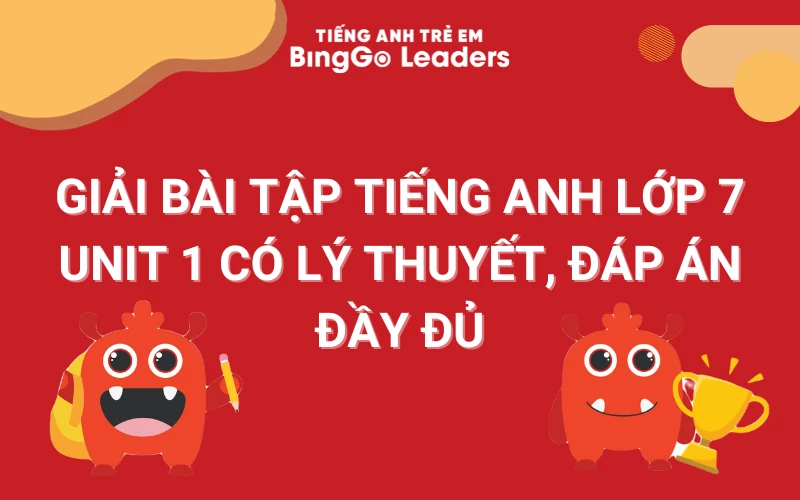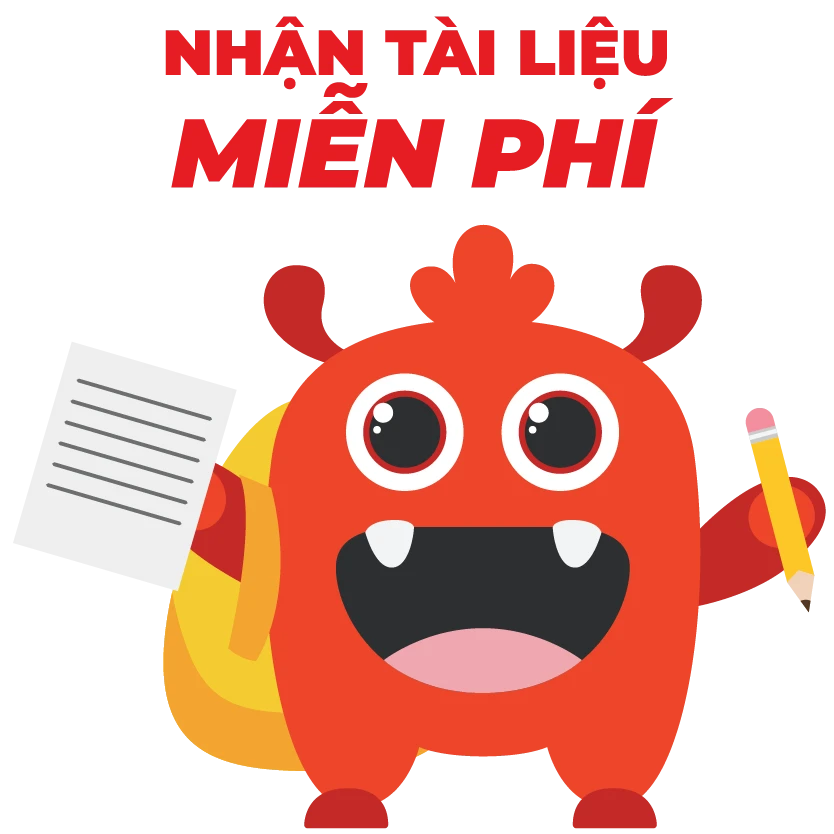Với mong muốn các em nhỏ có thể dễ dàng nắm bắt chắc chắn các kiến thức tiếng Anh lớp 7 và đạt được điểm cao trong các kỳ thi. Tiếng Anh trẻ em BingGo Leaders đã tổng hợp các kiến thức xuyên suốt chương trình và tạo ra các bài tập tiếng Anh lớp 7 từ cơ bản đến nâng cao giúp bé luyện tập hiệu quả. Cùng đón đọc bài viết ngay nào các bạn nhỏ ơi!
1. Các kiến thức cần nắm vững để giải bài tập tiếng Anh lớp 7
Luôn luôn ôn tập lý thuyết trước khi làm bài tập chính là nguyên tắc cơ bản nhất để các em có thể hoàn thiện khả năng sử dụng ngữ pháp của mình. Trước khi đi vào phần bài tập, hãy cùng BingGo Leaders ôn lại toàn bộ lý thuyết tiếng Anh lớp 7 nhé!
1.1. Các thì cơ bản trong chương trình tiếng Anh lớp 7
1.1.1. Thì hiện tại đơn (Present Simple)
Thì hiện tại đơn trong tiếng Anh gọi là The Present Simple Tense. Nói một cách khái quát nhất, thì hiện tại đơn dùng để diễn tả sự vật, sự việc diễn ra ở hiện tại có tính quy luật.
Công thức
|
Động từ “tobe” |
Động từ thường |
|
|
Câu khẳng định |
S + is/am/are + … Ví dụ: She is a scholarship hunter (Cô ấy là một thợ săn học bổng) |
S + V (s/es) + … Ví dụ: He plays football in the backyard (Anh ấy chơi đá bóng ở sân sau) |
|
Câu phủ định |
S + is/am/are + not + … Ví dụ: Gwen is not a teacher (Gwen không phải là một giáo viên) |
S + don’t/doesn’t + V +... Ví dụ: I don’t have any money (Tôi không có tiền) |
|
Câu nghi vấn |
Am/Are/Is + S + …? Ví dụ: Are you Jayn? (Bạn có phải là Jayn?) |
Wh + do/does + S + …? Ví dụ: What do you do in your free time? (Bạn làm gì trong thời gian rảnh?) |
Cách dùng
- Diễn tả một hành động được lặp đi lặp lại hàng ngày
Ví dụ: I often go to school by bus (Tôi thường xuyên đi tới trường bằng xe buýt)
- Diễn tả một sự thật hiển nhiên
Ví dụ: The weather is cold in the winter (Thời tiết lạnh vào mùa đông)
- Diễn tả một một hành động đã được hoạch định sẵn
Ví dụ: The plane take off at 9:00 a.m
1.1.2. Thì quá khứ đơn (Past Simple)
Trong ngữ pháp tiếng Anh, thì quá khứ đơn (Past Simple) thường được sử dụng để mô tả các sự kiện đã diễn ra và kết thúc. Cùng tham khảo cách sử dụng thì quá khứ đơn cho cả động từ thường và động từ "to be".
Công thức
|
S + V(ed)/ be (was/were) + … |
Ví dụ: Manh went to the mall yesterday (Mạnh đã đến khu mua sắm vào hôm qua)
Cách dùng:
- Diễn tả hành động đã xảy ra trong quá khứ, không còn liên quan tới hiện tại
Ví dụ: They bought this car in 2010. (Họ đã mua chiếc xe này vào năm 2010)
- Diễn tả các hành động xảy ra liên tiếp trong quá khứ
Ví dụ: She woke up, ate breakfast and went to school (Cô ấy đã thức dậy, ăn sáng và đi tới trường)
- Diễn tả một kỷ niệm
Ví dụ: When I was young, I used to go to school by bike (Khi tôi còn trẻ, tôi thường đến trường bằng xe đạp)
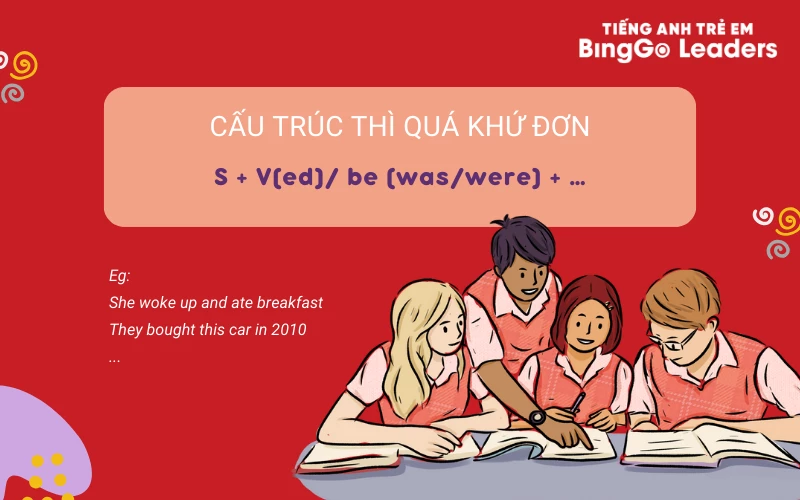
Thì quá khứ đơn
1.2. Cấu trúc câu so sánh
So sánh hơn
- Tính từ ngắn: S + be + adj(er) + than + ….
Ví dụ: I am thinner than Hanh (Tôi gầy hơn Hạnh)
- Tính từ dài: S + be + more + adj + than + …
Ví dụ: My girlfriend is more beautiful than her friends (Bạn gái của tôi xinh đẹp hơn bạn của cô ấy)
So sánh nhất
- Tính từ ngắn: S + be + the +adj + est + …
Ví dụ: She is the tallest in her class (Cô ấy là người cao nhất trong lớp)
- Tính từ dài: S + be + the most + adj + …
Ví dụ: PUBG is the most interesting game ever (PUBG là tựa game thú vị nhất)
>>> Xem thêm: Tất tần tật về cấu trúc so sánh trong tiếng Anh - Lưu lại học ngay
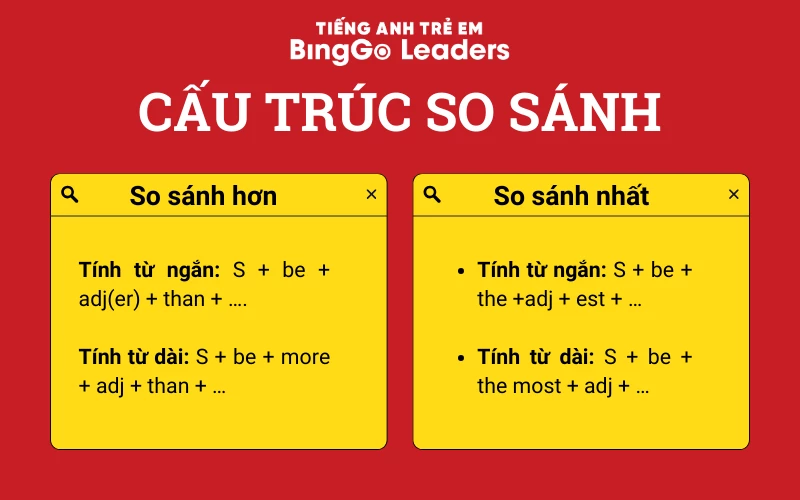
Cấu trúc câu so sánh
1.3. Cấu trúc should/ shouldn’t
Công thức:
|
S + should/shouldn’t + V(nguyên bản) + … |
Ví dụ: You should eat more vegetable
Chức năng
- Đưa ra lời khuyên, lời đề nghị hoặc gợi ý
Ví dụ: You should drink more water (Bạn nên uống thêm thật nhiều nước)
- Dự đoán bằng các bằng chứng ở hiện tại
Ví dụ: He study very hard that he should on top of the class (Anh ấy hơn rất chăm, có lẽ anh ấy sẽ đạt được vị trí đầu trong lớp)
- Diễn tả các luật lệ cần được tuân thủ, không mang tính bắt buộc
Ví dụ: You should wear helmet on the street (Bạn nên đội mũ bảo hiểm khi ra đường)
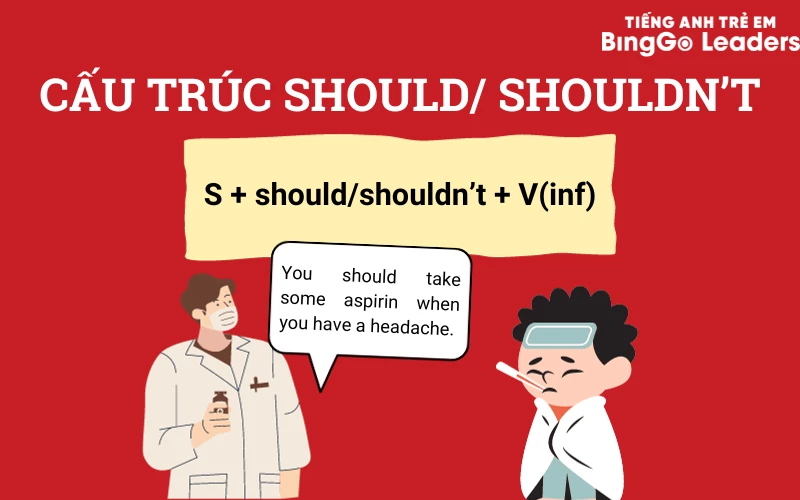
Cấu trúc should/ shouldn’t
1.4. Từ chỉ số lượng
- Many + N đếm được số nhiều.
Ví dụ: She has many books (Cô ấy có rất nhiều sách)
- Much + N không đếm được
Ví dụ: She drink so much waters (Cô ấy uống rất nhiều nước)
- A lot of + N đếm được và không đếm được
Ví dụ: She has a lot of clothes (Cô ấy có rất nhiều quần áo)
- Lots of + N đếm được và không đếm được
Ví dụ: She needs lots of efforts to achieve that gold medal (Cô ấy cần rất nhiều nỗ lực để dành được chiếc huy chương vàng đó)
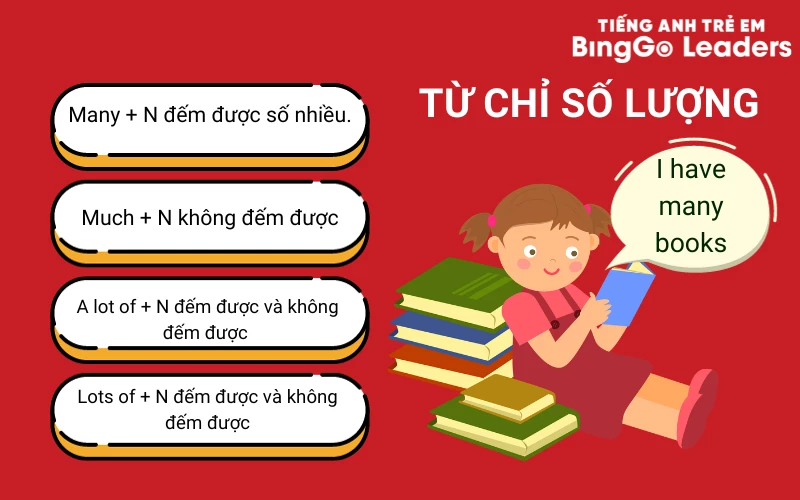
Từ chỉ số lượng
1.5. Cấu trúc Although/Though
|
Although/ Though + S1 + V1 +(O), S2 + V2 + (O) + … hoặc S1 + V1 + (O) + although/though + S2 + V2 + (O) + … |
Ví dụ: Although I was sick, I went to school (Mặc dù tôi ốm, tôi vẫn đến trường)
I went to school although I was sick (Tôi vẫn đến trường mặc dù tôi ốm)
>>> Xem thêm: CẤU TRÚC EVEN THOUGH VÀ CÁCH PHÂN BIỆT VỚI ALTHOUGH - THOUGH
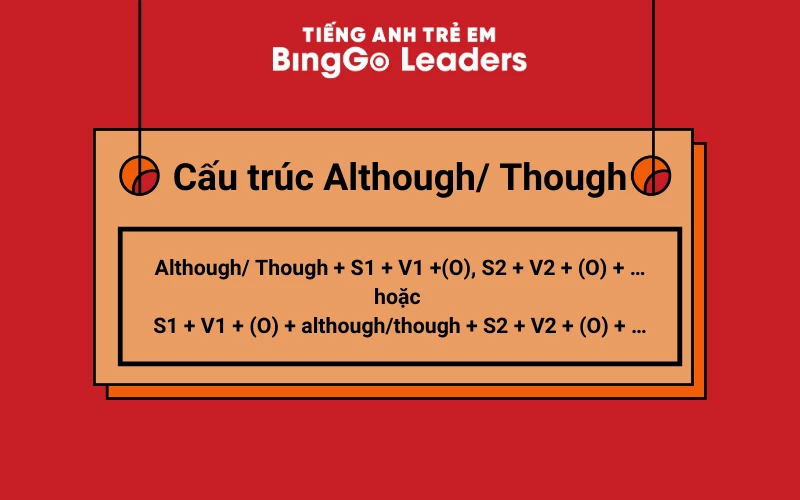
Cấu trúc Although/ Though
2. Các dạng bài tập tiếng Anh lớp 7 trọng tâm
2.1. Dạng bài tập cơ bản
2.1.1. Bài tập 1: Viết dạng đúng của từ so sánh hơn và so sánh hơn nhất
|
Tính từ |
So sánh hơn |
So sánh hơn nhất |
|
hot |
hotter |
hottest |
|
cold |
||
|
thin |
||
|
sad |
||
|
good |
||
|
interesting |
||
|
beautiful |
||
|
bad |
||
|
tall |
||
|
attractive |

Bài tập viết dạng đúng của từ so sánh
Đáp án:
1. hotter - hottest
2. colder - coldest
3. thinner - thinnest
4. sadder - saddest
5. better - the best
6. more interesting - the most interesting
7. more beautiful - the most beautiful
8. worse - the worst
9. taller - tallest
10. more attractive - the most attractive
2.1.2. Bài tập 2: Hoàn thành đoạn văn sau bằng cách khoanh vào từ đúng
There are (1) many / much new phones in the shops this month, but our favourite is definitely the new Iphone 15, by Apple. (2) No / All smartphones these days come with (3) some / any free apps, but the Iphone 15 has (4) a little / a few really good ones, like an app for finding Wi-Fi when you’re in town. The Iphone 15 is a bit more expensive than other smartphones, but (5) each / any phone comes with a leather case.

Bài tập hoàn thiện đoạn văn
Đáp án:
1. many
2. all
3. some
4. a few
5. each
>>> Xem thêm bài tập tiếng Anh lớp 7: BÀI TẬP THÌ HIỆN TẠI ĐƠN LỚP 7 - CÓ ĐÁP ÁN
2.1.3. Bài tập 3: Sử dụng thì quá khứ đơn để viết dạng đúng của động từ trong ngoặc
1. When I (be)____a child, I used to play football with my father
2. She (be)______in Ha Noi last year
3. They (do)_______their homework last night
4. John Cabot (sail)________in 1498
5. He (not go)______to bed last evening
6. ____you (give)_______ her my passport?
7. Hoa (meet)____ her boyfriend in 2009
8. The restaurant (close)__________last month
9. Son (not drink)_________any beer yesterday
10. We (visit)_________ our grandparents last year

Bài tập viết dạng đúng của động từ trong ngoặc
Đáp án:
1. was
2. was
3. did
4. sailed
5. didn’t go
6. Did/ give
7. met
8. closed
9. didn’t drink
10. visited
2.1.4. Bài tập 4: Chọn đáp án đúng nhất
1. Do you__________to school by foot or bike?
A. go B. goes C. went D. going
2. My house_________Le Quy Don Street
A. are B. am C. is D. 0
3. I_______in class 7B
A. are B. am C. is D. 0
4. Minh_______candies everyday.
A. eat B. ate C. eaten D. eats
5. How_______do you play soccer?
A. often B. never C. rarely D. sometimes
6. I____up at 7 o’clock
A. get B. gets C. got D. gives
7. Water_______at 100 degrees
A. boil B. boiled C. boils D. 0
8. The sky_____blue
A. are B. am C. is D. 0
9. The bus________at 8 a.m
A. leave B. leaves C. leaved D. 0
10. I think Lan____________a good person
A. are B. am C. is C. 0

Bài tập trắc nghiệm
Đáp án:
1. A
2. C
3. B
4. D
5. A
6. A
7. C
8. C
9. B
10. C
2.1.5. Bài tập 5: Chọn should hoặc shouldn’t để hoàn thành câu sau
1. You (should/shouldn’t) eat too much sweets
2. They (should/shouldn’t) practise more exercise
3. I’m feel hot. I (should/shouldn’t) take some aspirin
4. All of visitors (should/shouldn’t) inform the receptionist of their arrival
5. We (should/shouldn’t) drink and drive
6. If you follow these tutorial, you (should/shouldn’t) have any trouble to solve your problem
7. I think he (should/shouldn’t) appeared to the party
8. She (should/shouldn’t) think this book helpful
9. I think you (should/shouldn’t) pick on her
10. It (should/shouldn’t) be rain today
11. They (should/shouldn’t) apologize for their rude behavior

Bài tập về cấu trúc should/ shouldn’t
Đáp án:
1. shouldn’t
2. should
3. should
4. should
5. shouldn’t
6. shouldn’t
7. should
8. should
9. shouldn’t
10. should
11. should
2.2. Dạng bài tập nâng cao
2.2.1. Bài tập 1: Nối A với B để thành một câu hoàn chỉnh
|
A |
B |
|
1. Although it rained a lot…. |
a. …though it was raining heavily |
|
2. Alice went out,.... |
b. … the new motor model is safer and more efficient |
|
3. Though the street was hardly crowded… |
c. …Hoang enjoyed his summer holiday |
|
4. I play chess with Son every month… |
d. …I’ve never spoken to him though |
|
5. Though more expensive,... |
e. …we still arrived on time |

Bài tập nối câu
Đáp án:
1 - c
2 - a
3 - e
4 - d
5 - b
2.2.2. Viết lại câu mà không làm thay đổi nghĩa
1. Anna is the tallest girl in the class
→_____________________
2. Hoang is shorter than Son
→_____________________
3. This is the most delicious cookies I’ve ever tasted
→_____________________
4. My car is bigger than your car
→_____________________
5. I don’t think this cake is expensive as it is
→_____________________
6. I can’t cook as well as my mother
→_____________________
7. This exercise is easier than that one
→_____________________
8. My family drive not as carefully as they do
→_____________________
9. Other oceans in the world aren’t as large as the Pacific one
→_____________________
10. No one in my family is older than my grandmother
→_____________________

Bài tập viết lại câu theo nghĩa tương tự
Đáp án:
1. No one in the class is taller than Anna
2. Son is taller than Hoang
3. I’ve never tasted more delicious cookies than these one
4. Your car is not as big as my car
5. This cake is more expensive than I think
6. My mother can cook better than me
7. That exercise is not as easy as this one
8. They drive more carefully than my family do
9. The Pacific Ocean is the largest ocean in the world
10. My grandmother is the oldest in my family
>>> Xem thêm bài tập tiếng Anh lớp 7: BÀI TẬP THÌ QUÁ KHỨ ĐƠN LỚP 7 CHO BÉ DỄ DÀNG ÔN LUYỆN CÓ ĐÁP ÁN
2.2.3. Chọn đáp án đúng nhất cho các câu sau
1. How are you getting________with your Math?
A. on B. in C. at D. 0
2. I hide the cookies in the box so that the kids can’t get_______it
A. on B. in C. at D. 0
3. If you continue like this, you will get_______trouble
A. on B. in C. at D. 0
4. The APPA hopes to get______at the next election
A. on B. in C. at D. 0
5. He got_____the plane at 9 a.m
A. on B. in C. at D. 0
6. My grandmother is getting______now, she is over 70
A. on B. in C. at D. 0
7. We’ve put the candies on top of the shelf so that the kids can’t get___it
A. on B. in C. at D. 0
8. He got_____with his work while I was listening to the music
A. on B. in C. at D. 0
9. Quan often goes for a walk_______the morning
A. on B. in C. at D. 0
10. Hien live______88 Tran Dai Nghia Street
A. on B. in C. at D. 0

Bài tập về giới từ in, on, at
Đáp án:
1. A
2. C
3. B
4. B
5. A
6. A
7. C
8. A
9. B
10. C
2.2.4. Chia động từ để hoàn thành đoạn văn sau
On Tuesday, the children ___ (talk) about a day out together in the country. The next morning, they ___ (go) to the country with their dogs and ___ (play) together. Quan and Tung ___ (have) some kites. Some time later the dogs___(be) not there. So they ___ (call) them and ____ (look) for them in the forest. After hours the children ____ (find) them and ___ (take) them back. Minh ___ (be) very happy to see them again. At lunchtime Son ___ (go) to the bikes and ___ (fetch) the basket with some meat sandwiches. Then they ___ (play) football. Minh and Son ____ (win). In the evening they ___ (ride) home.

Bài tập chia động từ để hoàn thành đoạn văn
Đáp án:
1. talk
2. went
3. played
4. had
5. were
6. called
7. looked
8. found
9. took
10. was
11. went
12. fetched
13. played
14. won
15. rode
2.2.5. Điền từ thích hợp để hoàn thành các câu sau
1. Julan__________drink tea very often
2. What time____you go to school?
3. Where______Bob come from?
4. It_______me an hour to solve this Math problem
5. David_____very fit because he doesn’t do any sport
6. Does your sister______tennis?
7. How_____do you play soccer?
8. The kids will work hard if the lessons are____
9. She always nervous when she is______an exam
10. In many school in Vietnam students have to wear a________

Bài tập điền từ
Đáp án:
1. doesn’t
2. do
3. does
4. takes
5. isn’t
6. play
7. often
8. interesting
9. taking
10. uniform
3. Kết luận
Làm bài tập tiếng Anh lớp 7 để tổng ôn lại toàn bộ kiến thức trong chương trình học là điều cực kỳ quan trọng mà các bé cần phải làm. Chính vì thế, Tiếng Anh trẻ em BingGo Leaders tin rằng, bài viết đã hệ thống đầy đủ lý thuyết cũng như bài tập để giúp bé chinh phục các thử thách khó nhằn trong kỳ thi sắp tới. Đừng quên theo dõi các bài viết tiếp theo để tích lũy thêm thật nhiều kiến thức bổ ích bố mẹ nhé!



